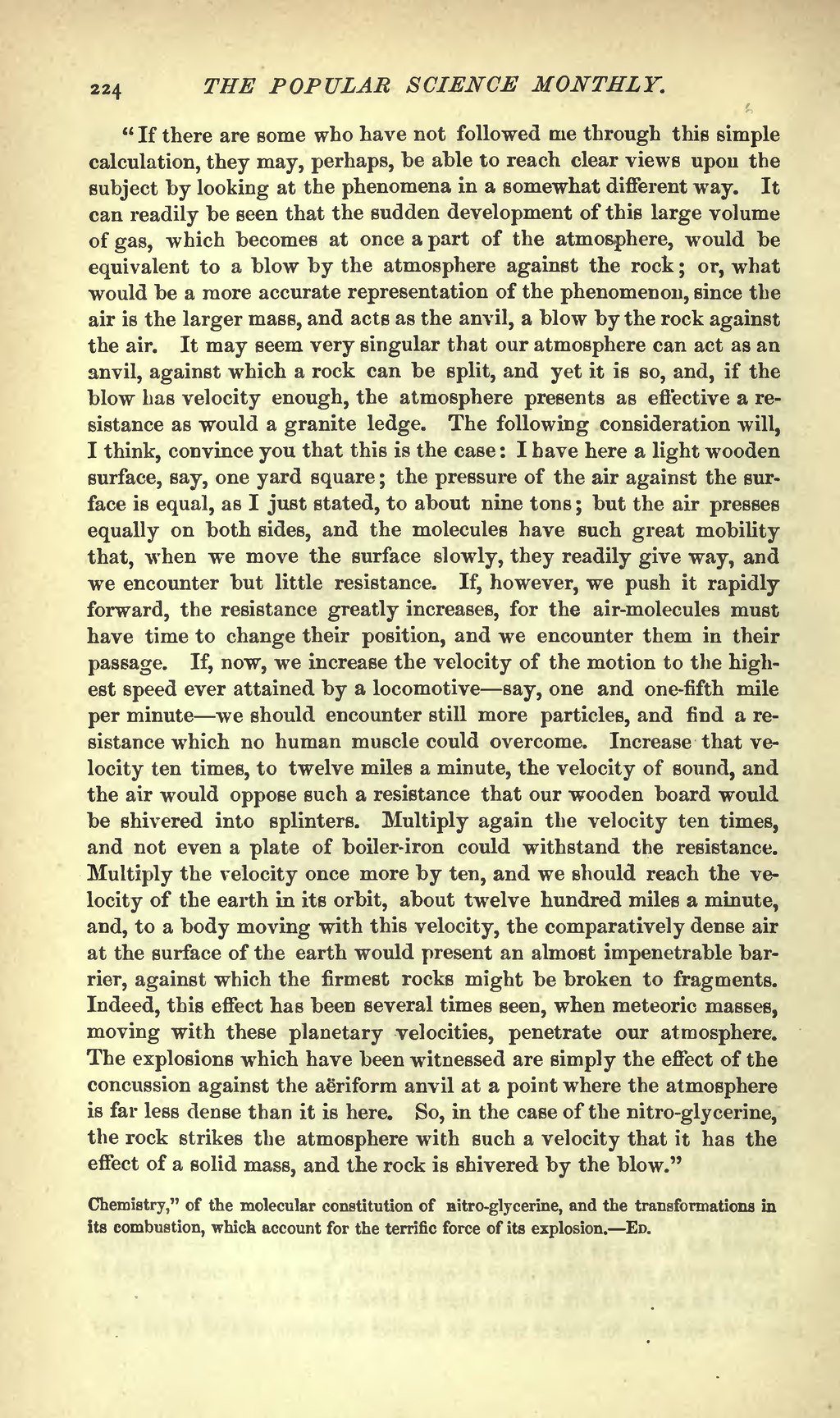"If there are some who have not followed me through this simple calculation, they may, perhaps, be able to reach clear views upon the subject by looking at the phenomena in a somewhat different way. It can readily be seen that the sudden development of this large volume of gas, which becomes at once a part of the atmosphere, would be equivalent to a blow by the atmosphere against the rock; or, what would be a more accurate representation of the phenomenon, since the air is the larger mass, and acts as the anvil, a blow by the rock against the air. It may seem very singular that our atmosphere can act as an anvil, against which a rock can be split, and yet it is so, and, if the blow has velocity enough, the atmosphere presents as effective a resistance as would a granite ledge. The following consideration will, I think, convince you that this is the case: I have here a light wooden surface, say, one yard square; the pressure of the air against the surface is equal, as I just stated, to about nine tons; but the air presses equally on both sides, and the molecules have such great mobility that, when we move the surface slowly, they readily give way, and we encounter but little resistance. If, however, we push it rapidly forward, the resistance greatly increases, for the air-molecules must have time to change their position, and we encounter them in their passage. If, now, we increase the velocity of the motion to the highest speed ever attained by a locomotive—say, one and one-fifth mile per minute—we should encounter still more particles, and find a resistance which no human muscle could overcome. Increase that velocity ten times, to twelve miles a minute, the velocity of sound, and the air would oppose such a resistance that our wooden board would be shivered into splinters. Multiply again the velocity ten times, and not even a plate of boiler-iron could withstand the resistance. Multiply the velocity once more by ten, and we should reach the velocity of the earth in its orbit, about twelve hundred miles a minute, and, to a body moving with this velocity, the comparatively dense air at the surface of the earth would present an almost impenetrable barrier, against which the firmest rocks might be broken to fragments. Indeed, this effect has been several times seen, when meteoric masses, moving with these planetary velocities, penetrate our atmosphere. The explosions which have been witnessed are simply the effect of the concussion against the aëriform anvil at a point where the atmosphere is far less dense than it is here. So, in the case of the nitro-glycerine, the rock strikes the atmosphere with such a velocity that it has the effect of a solid mass, and the rock is shivered by the blow."
Chemistry," of the molecular constitution of nitro-glycerine, and the transformations in its combustion, which account for the terrific force of its explosion.––Ed.
